Among the biggest, most exquisite, and most straightforward flowering bulbs to grow is the amaryllis. It is available in several different types that display a variety of brilliant hues. However, because these flowers grow so large, their leaves may be lengthy. We did extensive research to determine what to do with long amaryllis leaves.
Amaryllis generates several long, green leaves to improve photosynthesis and keep producing food even after its flower has faded to support the bloom the following year. Keep the leaves as long as they are healthy within the boundaries of your garden.
During summer when the plant goes dormant, the leaves turn yellow. The foliage naturally withers, and at that point, you can snip them off.
One of the greatest enjoyable aspects of winter is the lovely, vibrant, and long-lasting blossoms that Amaryllis gives. They are practically infallible because of their extraordinary durability, which signifies tenacity, elegance, and affection. Continue reading to learn more about what else you can do with your lengthy amaryllis leaves.
When Should Long Amaryllis Leaves Be Cut?
The Amaryllis plant develops long, green leaves in a strap-like shape even after its flower has bloomed. It still needs to be watered to support photosynthesis. The bulb store nutrients when the leaves develop to prepare for the following season's bloom. If your plant blooms throughout the winter, leave it indoors until the temperatures outside remain over 50 degrees F, and then relocate it to a sunny area of the garden.
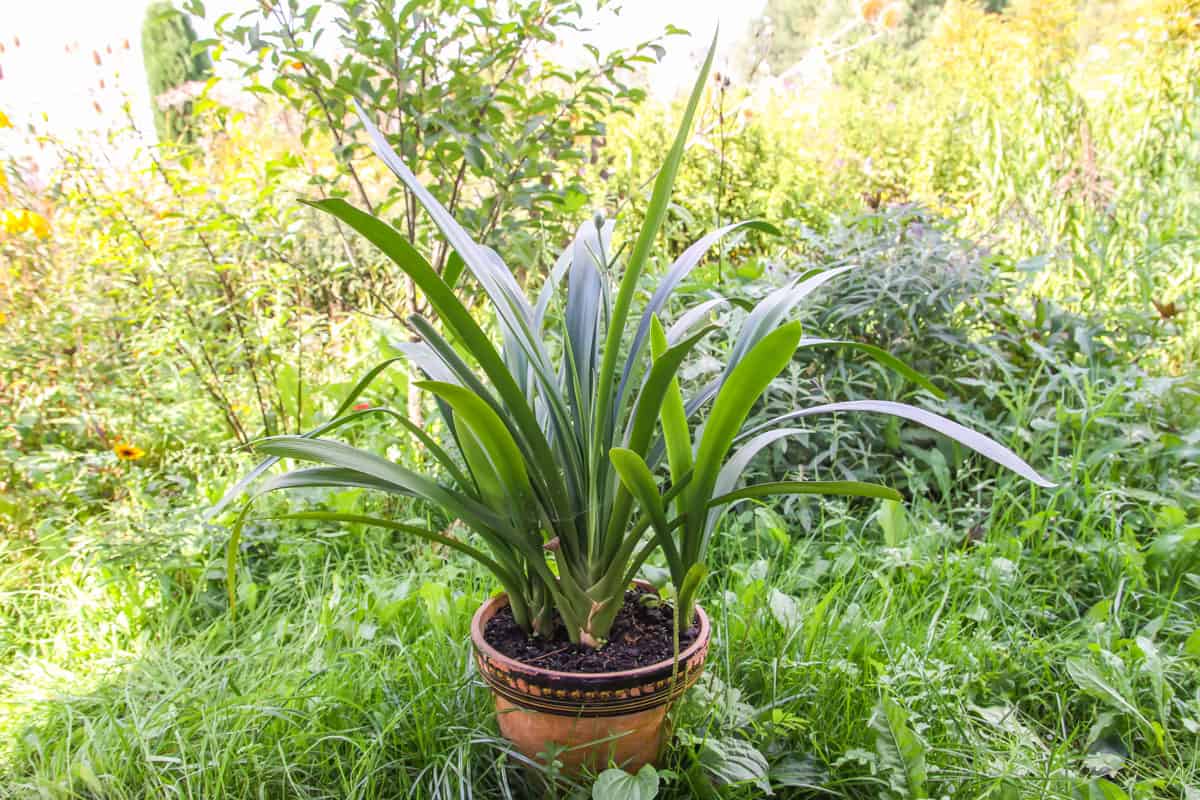
Amaryllis leaves eventually turn yellow during summer as the plant becomes dormant and slows down in development. During this period, cease watering to let the soil completely dry and the leaves begin to wither.
It is during dormancy when you can trim all the leaves off about an inch above the bulb. Then bring the pot indoors and place in a dry, shaded area, such as the basement. Replace the old soil with new potting soil, set the pot in bright sunlight, and restart watering to encourage new development after the plant has been inactive for around eight or ten weeks.
Can I Trim The Leaves After The Flower Has Faded? (By Any Chance)
Amaryllis leaves shouldn't be trimmed because it hinders the bulb from resting. However, after the plant has done flowering, and if you truly want to cut the leaves, you can do so down to the bulb's stem as it sags. In effect, this forces your amaryllis to blossom again. Typically, amaryllis only blooms annually. It is acceptable to perform the forced reblooming, especially if homeowners prefer a bi-annual bloom.
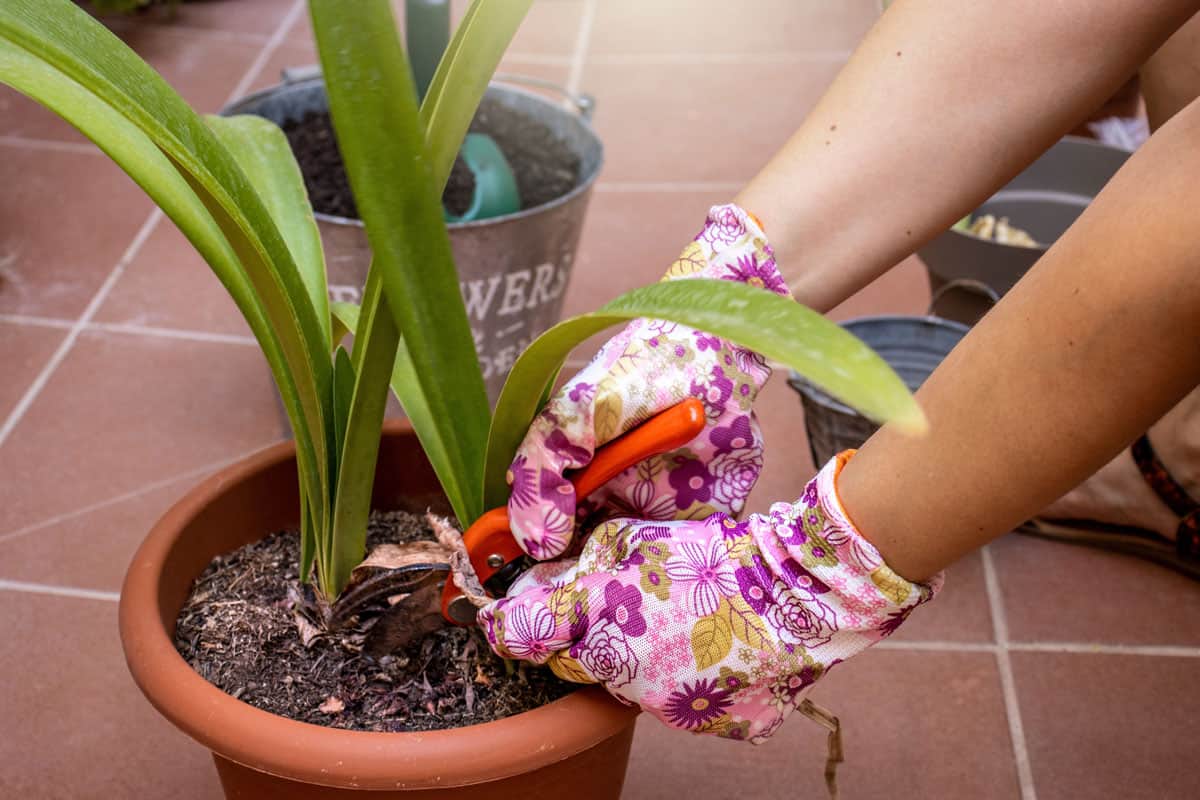
Ideally, the amaryllis bulb should be given at least two months to properly rest to go dormant. This boosts the plant's vitality for many years. If with proper care, amaryllis can live for many years.
Using pruning shears, trim throughout the width of each leaf 1 inch above the place where it connects the bulb to appropriately trim the leaves. To create a clean incision that can heal rapidly, make a single, clean cut. Repeat this procedure to remove all leaves, starting with the outermost ones.
How To Get Amaryllis New Blooms From Old Bulbs
Getting an amaryllis to bloom more than once each year is not as challenging as you might imagine. Winter blooming amaryllis have grown extremely popular, particularly during the holidays. However, because they are considered throwaway present plants, many people discard them after they have finished flowering. It's quite simple to get your amaryllis to bloom again every year, so don't throw out this unique plant.
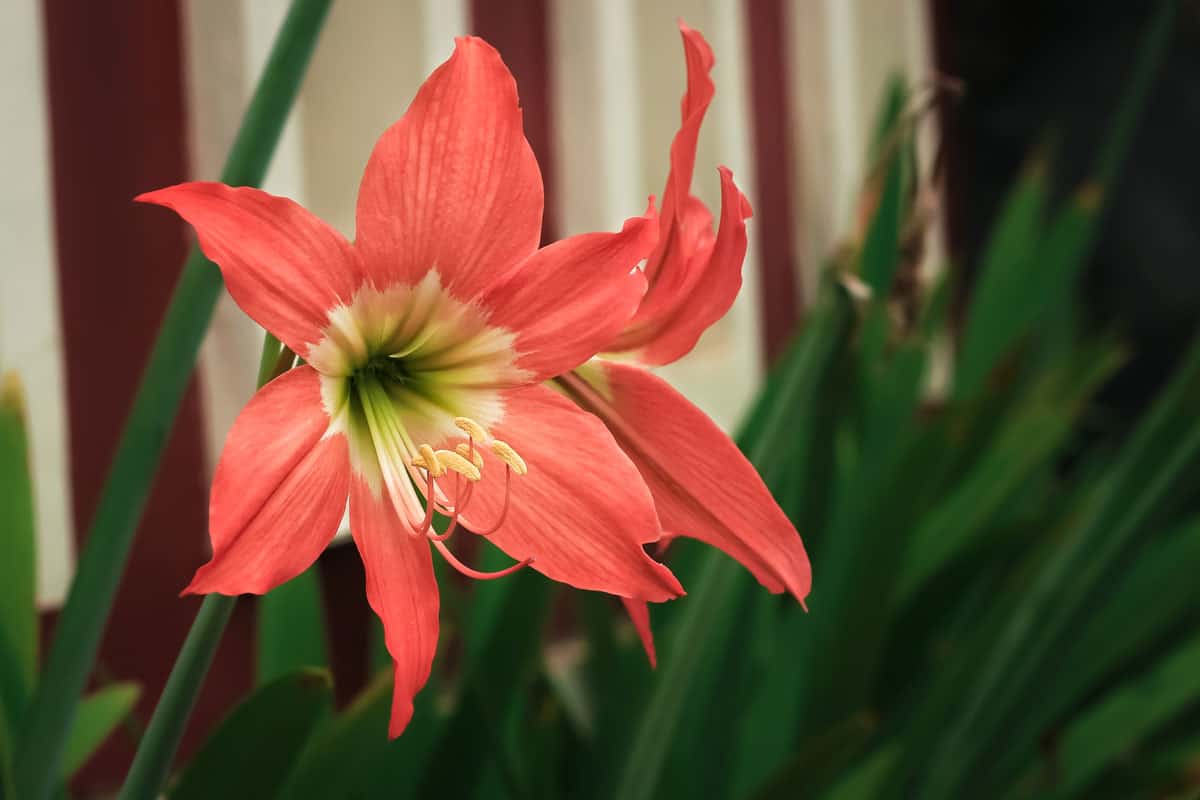
Your amaryllis will effectively rebloom if you follow a few easy steps.
1. Get Rid Of The Fading Flowers
The flower stems must be cut when the flowers have faded like most bulb plants. By doing this, the plant concentrates its energy on vegetative development as opposed to seed production. At this point, offer your amaryllis warm temperatures with bright light.
After flowering, keep growing amaryllis indoors in a south-facing window. When the temperature stays above 50°F, plants can be transported outside and in direct sunlight. The daytime highs are steady throughout the year. Water the bulbs when the soil is moist. Potted plants could dry down within a day during the warmest summer.
2. Promote Dormancy
Amaryllis are significantly different from other popular bulbs since they don't need prolonged period of cold weather to start flowering. However, they do require a time of dormancy, just like many bulbs do.
Before urging plants into dormancy, give the leaves four to six months to expand and become energetic for optimum blossoming. Cease from watering the amaryllis and, if it's outdoors, place the pot on its side to avoid getting wet.
3. Cut Away Any Dead Leaves
Remove leaves that are fully withered after a few weeks. It is advised to bake the tipped pot in the sun to provide the bulb with a warming therapy.
The amaryllis somehow doesn't need complete darkness to go into dormancy as other bulbs do. Take the bulb indoors if the temperature at night falls below 50°F. These bulbs must remain dormant for approximately two to three months. Pots can be air-dried and kept in a warm, dry location indoors if the rest period falls during cool weather.
4. Awaken The Resting Amaryllis Bulb
The bulb can be easily brought out of dormancy by giving it one watering to start growth and monitoring the soil's condition. When it dries, water it once more, but very lightly—especially when the new growth begins to appear. Before encouraging your bulb to emerge from hibernation, repot if necessary.
5. Put The Plant In A Bright Area
Placing the amaryllis in the warmest position available once it grows is recommended. Water the plants gently to support healthy growth, but refrain from overwatering as this can be fatal. Transfer the plant to a location with less light once the flowers open up to extend the bloom period. Amaryllis can live for a considerable length of time.
When an amaryllis plant reblooms, the leaves and flowers may appear opposite from a fresh plant. After transferring it to a warmer location, wait about six weeks before expecting your new bloom or flowers. Keep the soil wet but not waterlogged.
What To Do When Repotting Amaryllis
When an amaryllis bulb outpaces its pot or seems to be producing less, it should be replanted. Replacing the soil regularly is good for bulbs. Repotting your amaryllis should be done when it is dormant. Use potting soil that drains well, and remember the following advice.
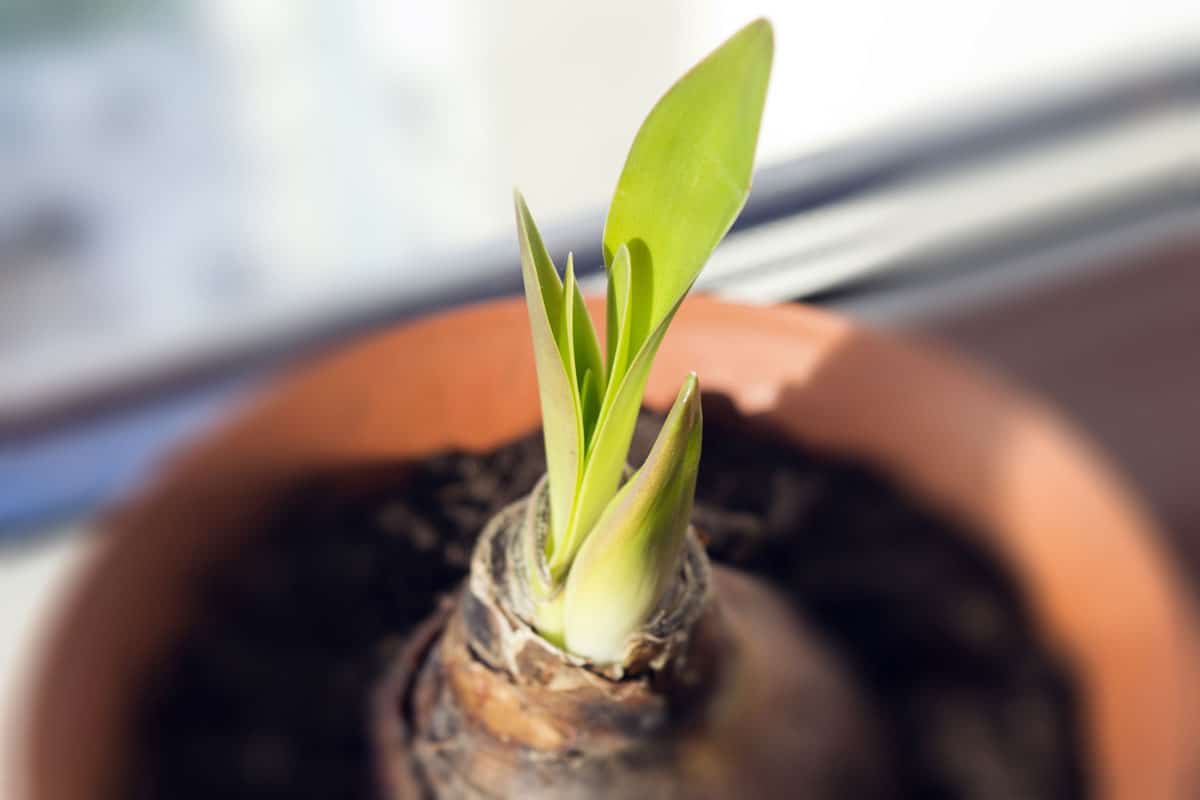
• Select The Appropriate Pot
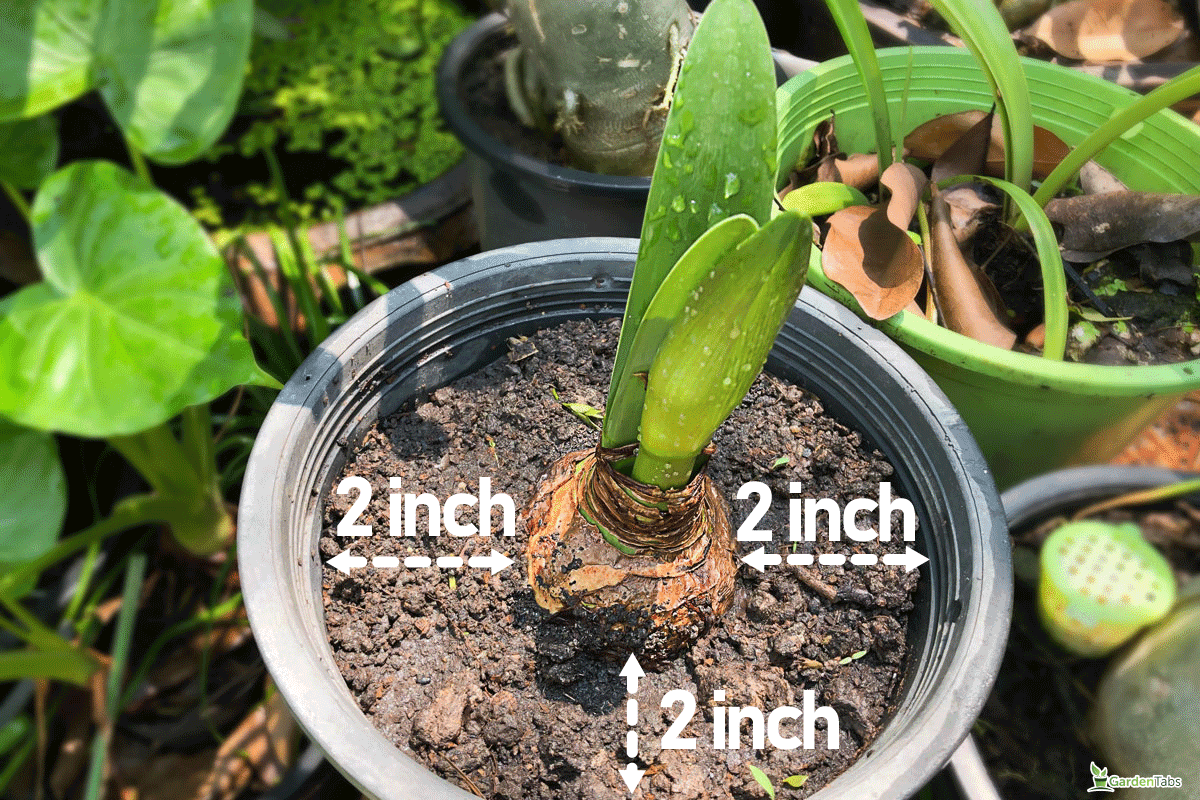
To accommodate the bulb's fragile root system, use a container 1 to 2 inches broader than the bulb. Utilize strong ceramic, terra-cotta, or other containers to provide a solid anchor for the protruding flower stalks.
• Avoid Planting Too Deeply
The bulb should only be buried in the soil for two-thirds of its length. If left unattended, the neck, a succulent portion in which the leaves emerge, is prone to decay.
• If You So Desire, Fertilize
The majority of gardeners, meanwhile, start using a regulated nutrient solution at half-strength after the leaves begin to develop. Feeding will encourage green growth, and the additional nutrients will help bulk up bulbs that visibly sag each year.
Check out this flower fertilizer on Amazon.
A Guideline For Seasonal Flowers
Follow this schedule if you want your bulbs to bloom in time for the holidays.
-
Late June
Stop the watering and tip the pot on its side to prevent more moisture from reaching the bulb. The bulb must enter a completely dormant state before the summer ends.
-
Earliest August
Trim off its leaves once completely withered, then keep the potted bulb somewhere dry.
-
Early October
Replant the soil in the pot or refresh it, and then water it only enough to prevent it all from drying out entirely.
-
Final October
Continue watering and shifting the pot to a southern exposure after the flower stalk's top starts to show. Keep watering, and then finally enjoy the magnificent blooms.
Conclusion
To improve photosynthesis, amaryllis plants have several leaves, and they continue to produce food even after the flower has gone. You can easily remove the foliage when it naturally wilts. If you want to clip the leaves after the plant has finished flowering, you can trim the long leaves to the bulb's sagging stem. However, by doing this, you are forcing your amaryllis to bloom once more.
Here are the related articles that you may be interested to read:
Should You Deadhead Amaryllis? [And How To]


When can you move these that are planted outside?